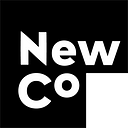The NewCo Daily: Today’s Top Stories
Does the Gig Economy Turn Us Into Lone Wolves?
“The sharing economy” was always a dubious label. The trend’s most successful exemplars are ride-hailing services like Uber and Lyft and short-term rental platforms like Airbnb. Whether you love or hate these businesses, what they provide us with simply doesn’t resemble sharing in any way.
The phrase “gig economy” isn’t perfect, either, but it’s better. It conveys both the liberation and the fragility of working under this new model. Its ascent is confirmed by the appearance in The New Yorker of a lengthy piece by Nathan Heller on the topic — a deep dive into the opportunities and problems the gig economy raises for its participants.
The story won’t break much news if you’ve been following this topic for the last half-decade, but it’s a valuable overview with new insights. Heller sees what appeals to so many gig workers — the flexibility and autonomy the working arrangement offers, and the way it enables people to squeeze extra income from previously unexploited corners of their lives. But he worries that it turns workers into disconnected atoms floating in a benefit-free void, with no retirement plan to fall back on and no chance to feel connection or community with colleagues. (Here’s a conservative blogger with a similar critique.)
Heller points to research that shows that gig economy work doesn’t funnel more income to people lower on the economic ladder, but instead often “diverts traditional service-worker earnings into more privileged pockets.” He also notes that security-free careers aren’t just a gig-economy thing any more: “The precariat is everywhere. Companies such as Nissan have begun manning factories with temps; even the U.S. Postal Service has turned to them. Academic jobs are increasingly filled with relatively cheap, short-term teaching appointments.”
The gig economy satisfies many customers’ needs. But it’s going to be a scary model for “the workplace of the future” unless we’re able to reform its flaws. How these companies work, and why people like their services, is now widely understood. Now they need to figure out how to make their gigs sustainable.
Amazon Echo Adds a Screen, Continues World Conquest
The Echo Show, the newest version of Amazon’s voice-driven home assistant, announced this week, adds a touchscreen to its interface and communications services to Alexa’s AI-enabled butlering repertoire (Shira Ovide in Bloomberg).
This is potentially a big deal, and not just because Amazon has already seized the lead in what could well be the next breakout category of digital device. Since the smartphone took the world by storm a decade ago, we’ve seen lots of attempts in this direction, from the tablet to the digital watch to Amazon’s own Kindle. But Echo feels qualitatively different; it’s not replacing anything, but rather opening up an entirely new market.
The Echo Show looks a little clunky, and it’s hard to see why you’d need it to talk or videoconference with other people if you already have a phone. But Echo already does enough other things — from ordering pizza to nagging you to meditate — to make it a hit. It has secured for Amazon a place at the exclusive table of companies that will “determine the computing future,” in Ovide’s words.
If the Echo universe keeps expanding, we’ll have a new worry on our hands: Just how welcome do we want to make this representative of a giant online retail marketplace in our homes? Amazon is an amazing innovator. But it also wants you to keep buying more junk. If the river of the world’s largest store is flowing right past your living room couch, you may never be able to push it back.
We’re Using Less Electricity. Thanks, LEDs.
Per capita electricity use in the U.S. peaked in 2007 and has been declining ever since. Now we know why: It’s all those light-emitting diode bulbs coming online (Bloomberg).
LEDs cost more upfront, but their costs have been coming down steadily. And they use 85 per cent less electricity than their incandescent predecessors. (Compact fluorescents play a part, too, but LEDs are even more efficient and less polluting, and they produce better light, too.)
Sometimes techno-fixes really do make a huge difference. Yet when the federal government first put mandates in place for energy-efficient lighting, we heard loud complaints from conservative leaders, who said incandescent bulbs were right up there in the all-American pantheon with mom and apple pie.
Our children will thank us for not listening to them. This is one investment in the future that will pay welcome, increasing dividends in coming decades.
The AI Field Needs A Diversity Injection
We know that artificial intelligence tech is shaped by the assumptions we feed it. If we want it to represent society well, the people who are creating it ought to represent society well. Right now, unfortunately, the typical AI startup or lab reflects the broader tech industry rather than the whole society: White males are overrepresented.
Melinda Gates and Fei-Fei Li, who is chief scientist at Google Cloud and director of the Stanford AI Lab, are teaming up on a new nonprofit aimed at changing that by increasing the diversity of the pool of AI students (Jessi Hempel in Backchannel). Their group, AI4All, seeks to expose AI science to high school students from underrepresented groups. A pilot program at five universities will invite 9th grade students into their labs for summer programs.
As Gates tells Hempel: “ If we don’t get women and people of color at the table — real technologists doing the real work — we will bias systems. Trying to reverse that a decade or two from now will be so much more difficult, if not close to impossible.”

